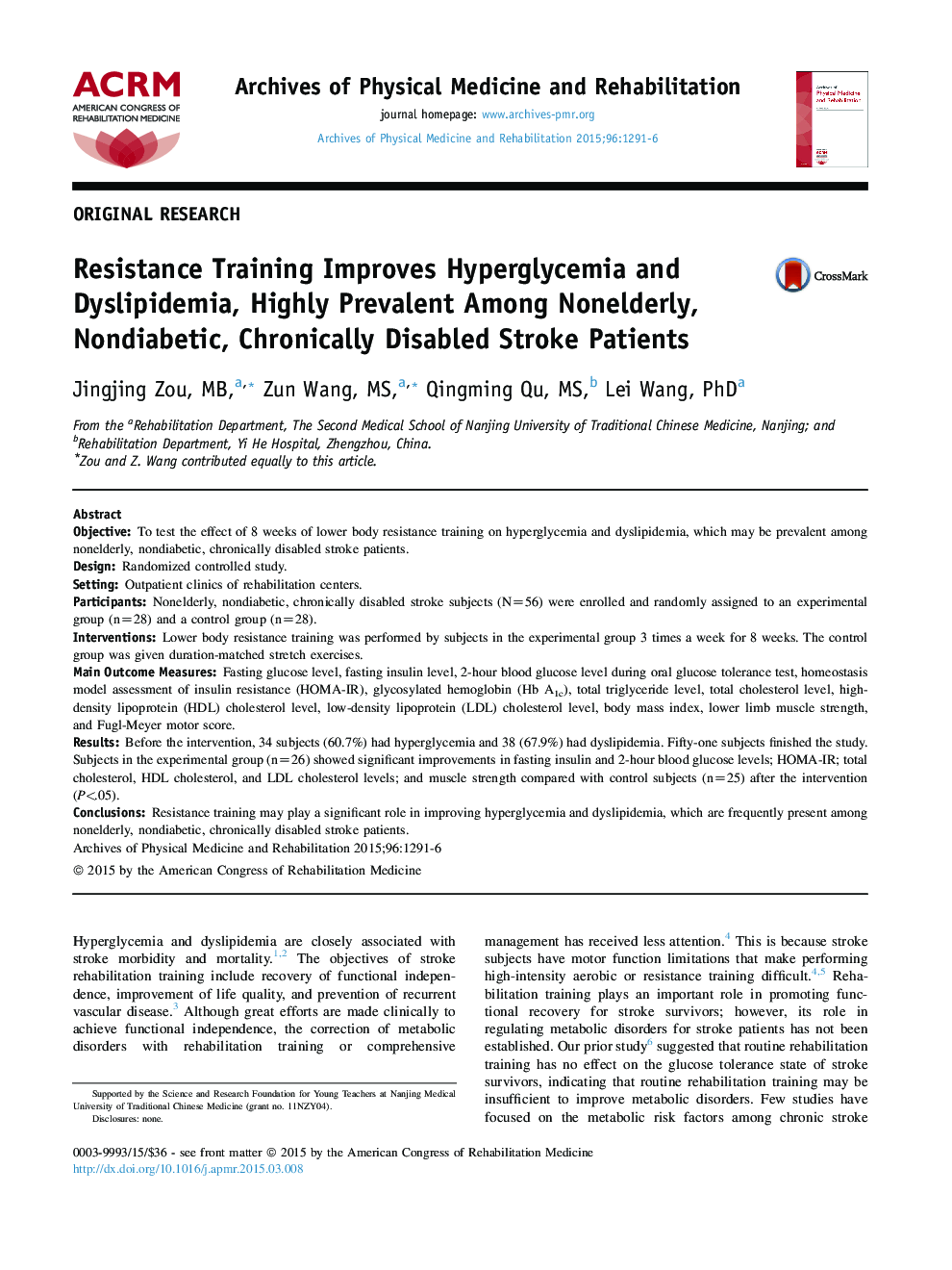| Article ID | Journal | Published Year | Pages | File Type |
|---|---|---|---|---|
| 3448112 | Archives of Physical Medicine and Rehabilitation | 2015 | 6 Pages |
ObjectiveTo test the effect of 8 weeks of lower body resistance training on hyperglycemia and dyslipidemia, which may be prevalent among nonelderly, nondiabetic, chronically disabled stroke patients.DesignRandomized controlled study.SettingOutpatient clinics of rehabilitation centers.ParticipantsNonelderly, nondiabetic, chronically disabled stroke subjects (N=56) were enrolled and randomly assigned to an experimental group (n=28) and a control group (n=28).InterventionsLower body resistance training was performed by subjects in the experimental group 3 times a week for 8 weeks. The control group was given duration-matched stretch exercises.Main Outcome MeasuresFasting glucose level, fasting insulin level, 2-hour blood glucose level during oral glucose tolerance test, homeostasis model assessment of insulin resistance (HOMA-IR), glycosylated hemoglobin (Hb A1c), total triglyceride level, total cholesterol level, high-density lipoprotein (HDL) cholesterol level, low-density lipoprotein (LDL) cholesterol level, body mass index, lower limb muscle strength, and Fugl-Meyer motor score.ResultsBefore the intervention, 34 subjects (60.7%) had hyperglycemia and 38 (67.9%) had dyslipidemia. Fifty-one subjects finished the study. Subjects in the experimental group (n=26) showed significant improvements in fasting insulin and 2-hour blood glucose levels; HOMA-IR; total cholesterol, HDL cholesterol, and LDL cholesterol levels; and muscle strength compared with control subjects (n=25) after the intervention (P<.05).ConclusionsResistance training may play a significant role in improving hyperglycemia and dyslipidemia, which are frequently present among nonelderly, nondiabetic, chronically disabled stroke patients.
